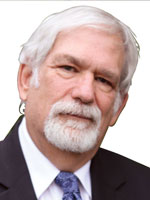Employment law
Another year, another mountain of important employment law – and our authors’ wisdom on how to use it
The title says it best. Employment law keeps burgeoning as one of the hottest and rapidly-evolving practice areas. As the old song somewhat goes, “They say that Keeping Up is Hard to Do.” But not with this great issue in your hands.
To give a wonderful overview of the lay of the land, we have, yet again, called upon the tireless reporter of all things Employment-Law, Andrew H. Friedman. His article, “The best and worst employment cases of 2016,” provides the good, the bad, and the most useful employment law cases of 2016 (and early 2017). What is equally appreciated is that Andrew does it with a nice dose of colorful commentary. His article briefly summarizes not just the most significant employment cases, but also those that are of the most utility to plaintiff employment practitioners.
For those who take on the tough task of seeking punitive damages, Anne Costin has contributed the perfect aid, an article about “Punitive damages: How to get them and keep them.” Anne’s article examines the difficulty of obtaining punitive damages, including a focus upon questions such as whether your case will support a punitive damage award, whether a managing agent was a wrongdoer and whether defendant’s conduct was reprehensible. It also discusses factors affecting the amount of punitive damages awardable as determined by constitutionally-accepted ratios and the wealth of the defendant.
The subject of “Me-too evidence” is often misunderstood, and, yet critically important in many types of employment law cases. We are therefore very grateful that Sandra M. Falchetti has stepped-up to remove much of the mystery and confusion. Evidence of similar wrongdoing against employees other than the plaintiff (“me-too” evidence) can be admissible and highly relevant to a number of factual issues, including the perceived hostility of the work environment, the harasser’s discriminatory animus, and the inadequacy of the company’s prevent-and-correct protocol. Besides strengthening your client’s case, this evidence can also justify punitive damages. The challenge is to overcome evidentiary challenges, primarily the defense assertion that this evidence is impermissible “character evidence.”
In these bizarre times, sexual harassment lawsuits have never been more topical or more important. It is therefore essential to understand Christina Cheung’s important contribution, “Employment law: Tips to consider when screening a sexual harassment claim.” Christina sadly notes the fact that, after 40 years of raising awareness in the workplace, sexual harassment still remains prevalent. Her article is key to understanding what constitutes sexual harassment. It also provides valuable tips on how to evaluate and handle potential claims brought by alleged victims.
Another hot area of employment law involves medical leave rights. We are therefore lucky to have the expertise of Ramit Mizrahi to help navigate the waters of this tricky area. Because such “tricks” exist, Ramit has penned an article entitled “Ten ways that employers deny employees their medical leave rights.” She notes that all too often, when employees with disabilities request medical leave, employers fail to properly respond to the requests. They may deny medical leaves to which employees are entitled, may impose requirements that are not lawful, or may fail to honor employees’ reinstatement rights. There are seven more! This article exposes ten ways that employers deny employees their leave rights so that plaintiffs’ counsel can effectively respond accordingly.
As we all know, the vast majority of employment cases are never tried. It is therefore fitting – and highly useful – that Gail Glick has penned her thoughts on “Maximizing your outcome in employment mediation.” Gail’s article offers practical tips on how to excel at employment mediation, from client intake to resolution. The article discusses preliminary steps in the representation to ensure a good result for your client, strategies in litigation to achieve your result, preparation for the mediation session, and finalizing a deal after the mediation is successful.
The Joe Posner Award: Bernard Alexander III
Finally, as we have consistently done since shortly after our leader and mentor, Joe Posner, sadly passed, we end this column by saluting the person who has received the California Employment Lawyers Association’s “Joe Posner Award” for all-round excellence and giving in the field of employment law. This year’s recipient is Bernard Alexander III – a good friend and a person whose skills and generosity span the full spectrum of employment law. Besides his highly successful career litigating – and especially trying – numerous six-and-seven-figure cases, Bernard is a former President of CELA and has contributed in numerous ways to teaching trial skills and substantive employment law as well as furthering diversity.
Norman Pine

Norman Pine is a founder of the appellate firm Pine Tillett Pine, specializing in plaintiff-side appeals with an emphasis on employment matters. Norm Pine has been editor of the Advocate Employment Law issue since 2001 when he took over for legendary employment lawyer Joe Posner. He and his wife and law partner, Beverly Tillett Pine, founded the appellate firm of Pine and Pine, predecessor to Pine Tillett Pine. Norm was named CAALA’s Appellate Lawyer of the Year in 2003 and, jointly with Beverly, won CELA’s “Joe Posner” award in 2008.
Beverly Tillett Pine

Beverly Tillett Pine is an appellate attorney specializing in plaintiff-side appeals with an emphasis on employment matters. With her law partner, Norman Pine, she founded the appellate firm of Pine and Pine, which is now Pine Pine Freeman Tillett, LLP. In addition, Beverly won Appellate Lawyer of the Year in 2012. They jointly won the “Joe Posner” award in 2008.
Copyright ©
2026
by the author.
For reprint permission, contact the publisher: Advocate Magazine
